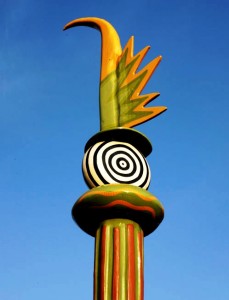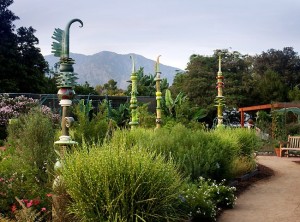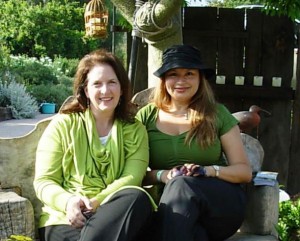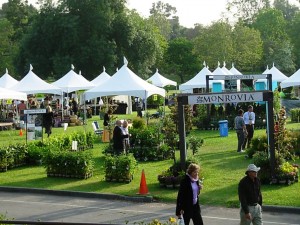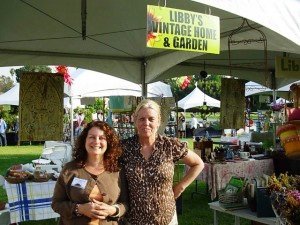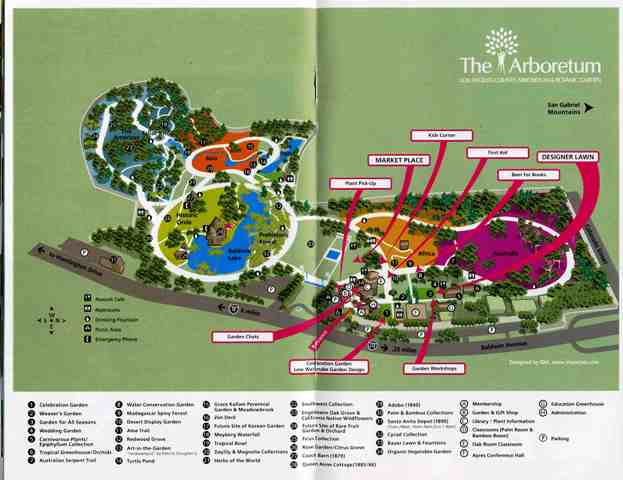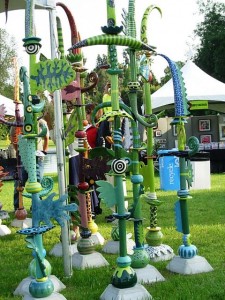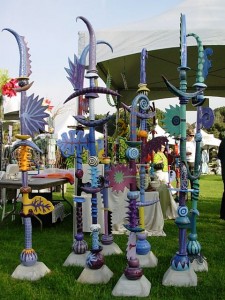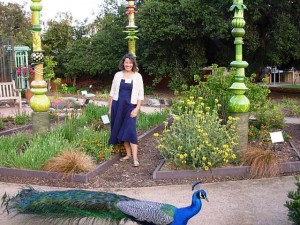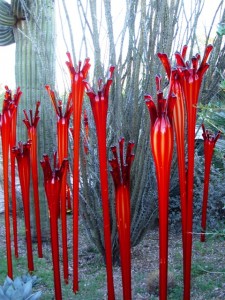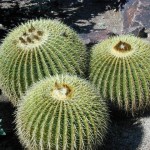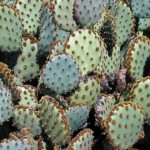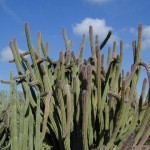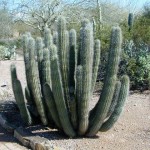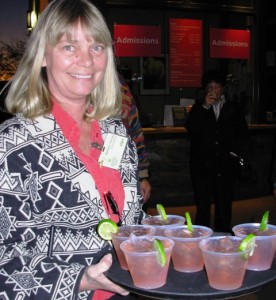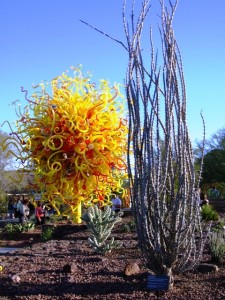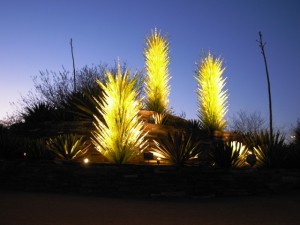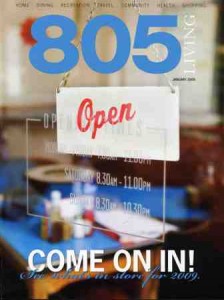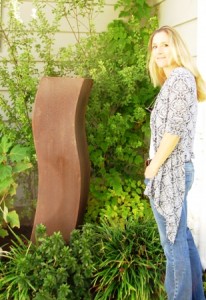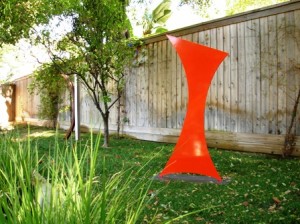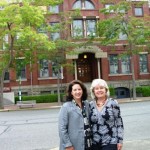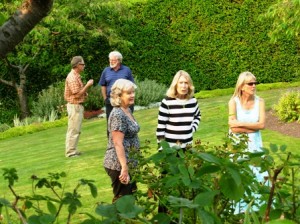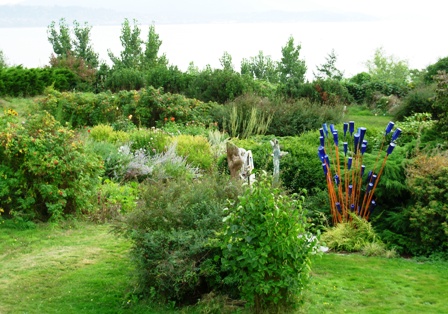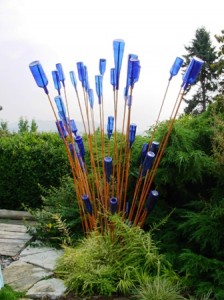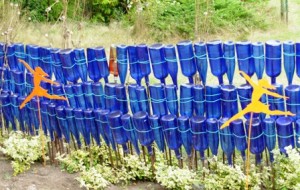Note: A version of this Q&A appeared earlier this week in “LA At Home,” the Los Angeles Times’ daily home and garden blog.
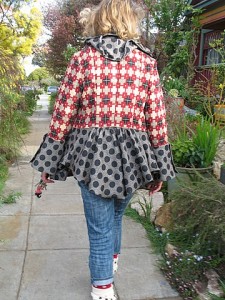
Mary Ann caught one glimpse of the awesome coat and matching socks . . . and said - Hey, that's Keeyla Meadows!
Los Angeles native Keeyla Meadows lives in Berkeley where she makes art and designs gardens. Her cheerful, 50-by-100 foot city lot is a living canvas packed with life-sized female figures and not-so-perfect vessels, hand-built in clay and glazed in a palette of turquoise, apricot and lavender.
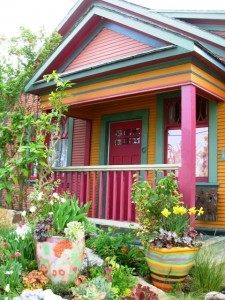
An exuberant color palette that few would dare to use - here's Keeyla's Berkeley bungalow and street-side "sunset" garden
No surface here is left unadorned. Whether it’s her swirly ceramic paving, custom metal benches or sculpted walls, Keeyla artistically places favorite objects and plants with a carefree confidence that few of us can master.
Fans of Keeyla have long admired her award-winning gardens, including a ‘Best in Show’ at the San Francisco Flower & Garden Show a few years back. Her beautiful first book, Making Gardens a Work of Art, was published in 2004 by Sasquatch Books, a Seattle imprint that also published my first book, The Northwest Gardener’s Resource Directory.
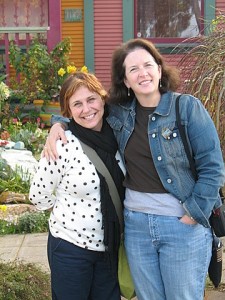
Lorene and me ~ gal pals in Keeyla's garden
In 2008, I lucked into an impromptu visit to Keeyla’s personal wonderland when my girlfriend Mary Ann Newcomer boldly followed her into Café Fanny’s in Berkeley, an Alice Waters bistro, and snagged an invite for our group of breakfasting garden writers.
Lorene Edwards Forkner, Mary Ann and I hopped in the car and followed Keeyla to her bungalow, a few blocks away. It is fair to say we were hyperventilating!
“You can take photos, but don’t publish them until my book is out,” Keeyla requested. It was the least we could do, having feasted our eyes on her botanical paint box, imagining how we might try her playful ideas in our own backyards.
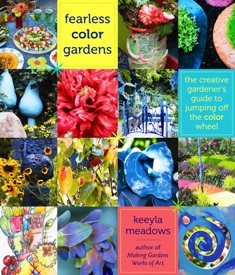 Her new book, Fearless Color Gardens: The creative gardener’s guide to jumping off the color wheel (Timber Press, $27.95), has just been published. Filled with Keeyla’s photography of design projects, as well as her doodles and sketches, it reads like a colorist’s memoir, complete with a muse named Emerald.
Her new book, Fearless Color Gardens: The creative gardener’s guide to jumping off the color wheel (Timber Press, $27.95), has just been published. Filled with Keeyla’s photography of design projects, as well as her doodles and sketches, it reads like a colorist’s memoir, complete with a muse named Emerald.
Strong on fantasy, it’s also a useful workbook for garden owners who need a nudge toward the more vibrant end of the color spectrum. I recently asked Keeyla about the book.
Q: How do you teach students to feel confident as garden designers?
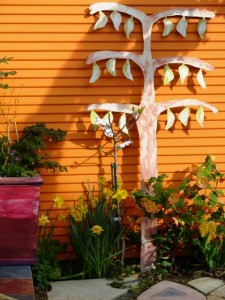
Keeyla's color sensibility is in her DNA as evidenced by the orange side of her house punctuated by a tree-inspird sculpture
A: A lot of people have this mantra that says, “I’m not a creative person. I’m not an artist.” Our lives are built around the practicality of what we have to do everyday so many people shut those doors to creativity a long time ago. I suggest you treat garden design like something you do all the time. The physical activity of placing plants in a space can be as easy as folding laundry and putting it away, or setting the table, or baking a cake.
Q. How can I make a landscape project feel less overwhelming?
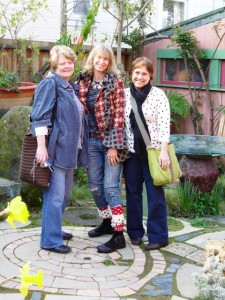
Mary Anne Newcomer, Keeyla Meadows and Lorene Edwards Forkner
A. I suggest you divide your space up like a series of photographs or like windows.
Decide what “picture” you’re working with, where it starts and ends. Start with looking out the kitchen window and use plants and art to fill the frame.
Q. Where does your color inspiration come from?
A. A lot of my color sense comes from growing up in Los Angeles and living with its “colorfulness” – the light, tile work and Catalina Island all inspired me. Right now, I’m designing a new garden for the San Francisco Flower & Garden Show in March. It’s a habitat garden and the colors I’m using come from the red-headed garter snake, an endangered snake from the San Mateo coastline. It has a read head with a turquoise and red stripe down the back, so it’s providing my design motif, my imagery and my color combination.
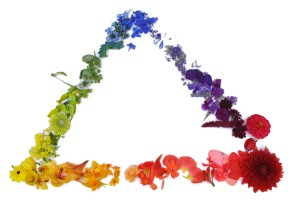
Jump off the conventional Color Wheel and play with Keeyla's Color Triangle
Q. How do you suggest people “jump off” the color wheel?
A. The traditional color wheel makes my head spin. I use a color triangle, which is so stabilizing. I put blue at the top of the pyramid – it represents the sky. The other two points are red and yellow. Between the three primary colors are the secondary colors. On either side of any point is a harmonic chord of color. You’ll never go wrong if you take one of the points – red, yellow or blue – and use one of those chords of color on either side of it.
Q. How do you balance artwork with the plants in your garden?
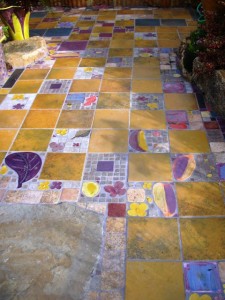
A checkerboard of color in a patio installation
A. Art gives me a constant relationship to plant against, a very stable feature to move through the seasons with.
Art creates so much focus and orients the whole space so one is not always reinventing. It is like a stage setting.
The artwork and hardscape set the stage for your plants to really become the stars.
Here’s a quote from Keeyla’s book that seems apropos:
“In my gardens, color refers to everything – absolutely everything. I don’t just make a bland holder, a neutral vase, for colorful plants. Color includes the rocks, the pavings, and the artwork. It also connects up with the color of the house and the sky above. So it’s really like bringing the camera to your eye. When you take a photo, you are looking at everything in the frame. In creating color gardens we will look at everything that is part of the garden picture. . . “
More photos to share from our visit to Keeyla’s magical garden:
- Lush, textural and inviting – a tiny space that lives large
- Here’s a little scene at the entrance to Keeyla’s studio. The leaf green contrasts nicely with pink, red and purple
- Soothing and serene, the cooler end of the spectrum is represented here
- Wonderful and whimsical colors! Who else has the guts to live with this much of the rainbow?
- Here’s the view through the French doors in her studio looking out to the garden
- Keeyla’s terrace outside her kitchen is a checkerboard of joyous hues
- A pink and pale yellow stone snake forms the tiny patio
- Happy colors in the tulips and narcissus, which complement Keeyla’s happy home
- Detailed artwork and plantings in Keeyla’s front yard









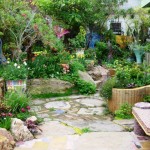
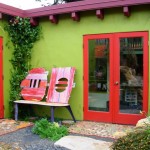
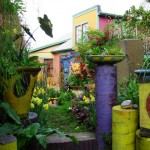
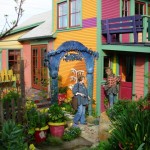
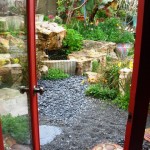
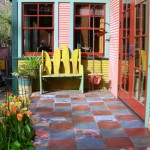
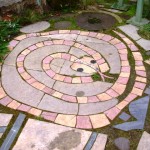
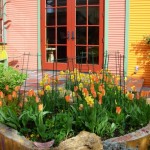
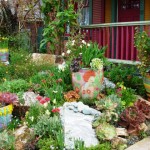
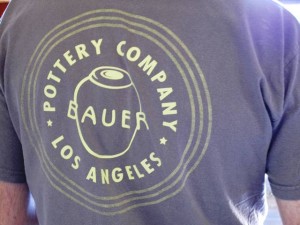
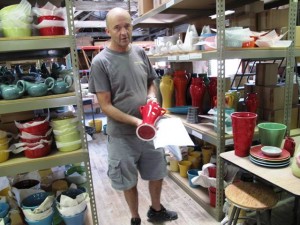
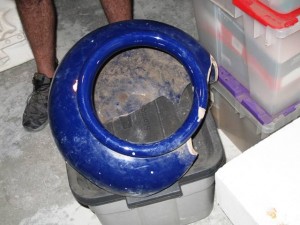
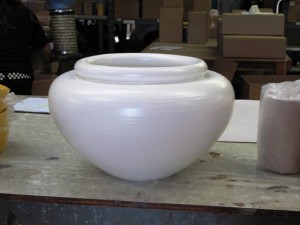
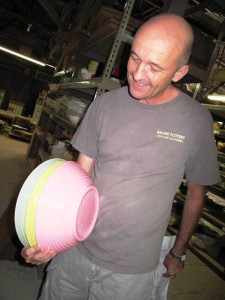
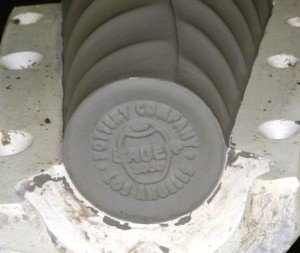
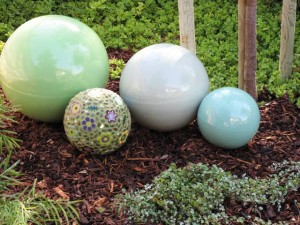
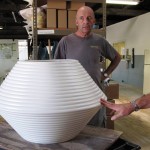
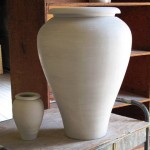
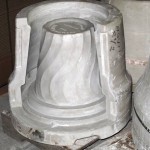
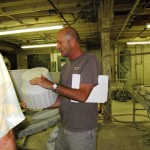
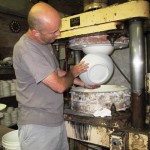
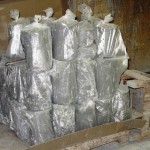
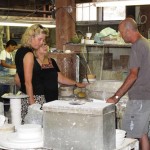
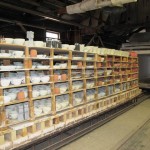
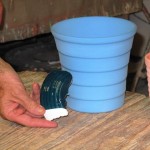
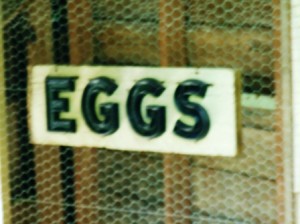
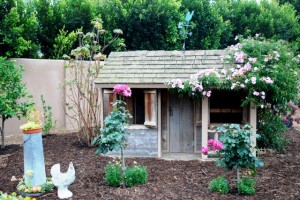
![20060717_shd_fries_032 Kathy, Jasper (left) and Xander feeding their chickens [William Wright photo]](https://www.slowflowerspodcast.com/wp-content/uploads/2009/08/20060717_shd_fries_032.jpg) Kathy’s chicken edifice is called the Palais de Poulet. She worked with Seattle artist-builder John Akers to create the magnificent chicken abode, complete with a jaunty turret and a brick entry path lined with boxwood clipped into a fleur de lis pattern.
Kathy’s chicken edifice is called the Palais de Poulet. She worked with Seattle artist-builder John Akers to create the magnificent chicken abode, complete with a jaunty turret and a brick entry path lined with boxwood clipped into a fleur de lis pattern. 